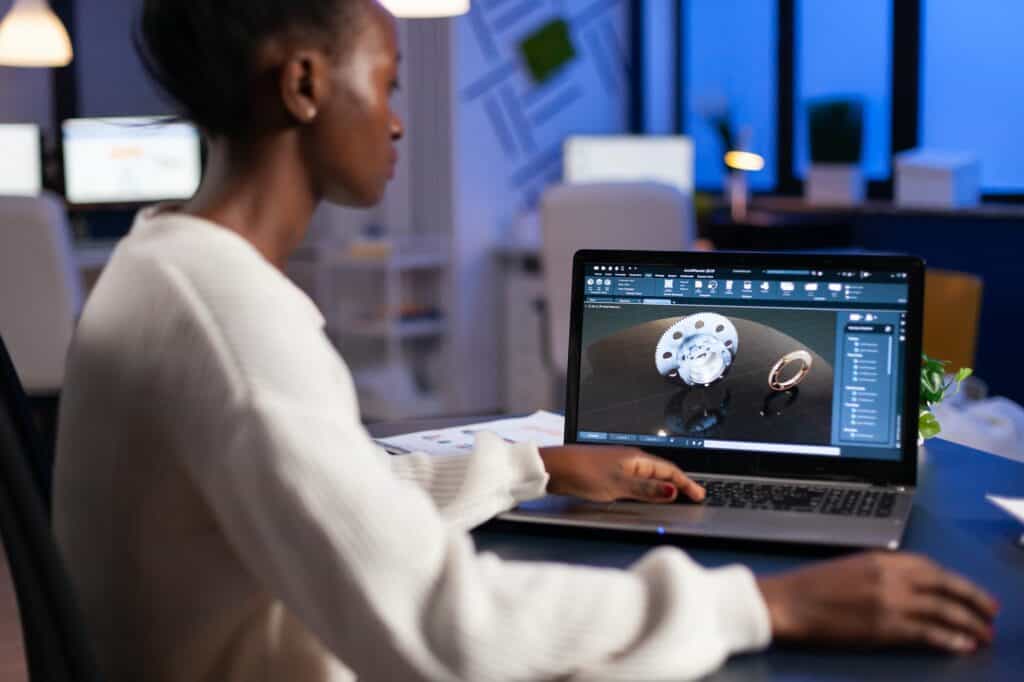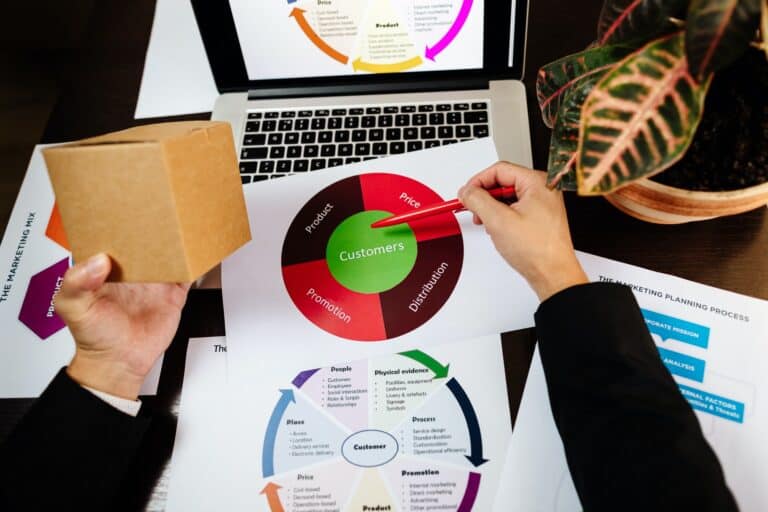The Prototype Testing is a testing technique that involves building a prototype of the product for which you want to test. Prototype testing is one way to identify issues in your design and make modifications prior to the release of your final product.
Prototype testing is a form of product testing that involves creating a prototype and then testing it in different ways. Prototype testing can be carried out in many different ways, but the most common way is to use a mock-up or lookalike model. Prototypes can also be tested by using prototypes created from materials with similar properties to the final design material. Prototype tests are often used when developing new products for further research and development, as well as before launching the product on the market. In this article we will cover 5 Different Ways To Test Your Product Prototype (Complete Guide).

Jump Ahead To :
What is Product Prototype testing?
When you’re trying to decide whether your new idea is worth pursuing, it’s often helpful to test out the concept on a small scale. Prototype testing allows users of all kinds (potential customers or collaborators) to play with and experiment with elements of an interface before the final version has been built. These tests can be done in person, online through surveys or questionnaires, by phone… whatever works best for your project!
Prototypes are especially useful when there are many unknowns about what might work well; this kind of exploration helps identify which way(s) may lead toward success instead of failure. Clicking around a prototype can provide insight into how easy something will be to use once every last detail isn’t being decided upon. Prototype testing provides you with the opportunity to test your idea before it is built, which means that if something doesn’t work well, there’s still time to fix it. Prototype testing can be done multiple times throughout a project in order to measure change and growth.
Prototype testing can be done by yourself, with a group of friends or colleagues, or even on the public. Prototype tests are conducted in many different ways for various reasons depending on your project’s goals and what you want to learn from the test results.
How Does Product Prototype Testing Work?
Prototype testing is a type of black box software testing that tests an existing (working) system to show how it responds. A prototype test can determine whether the product functions as intended, and if it works according to customer requirements. Prototype tests check all possible usage scenarios within predefined limits and shows quick results for further development or corrective action, such as on errors found during prototyping. Prototype modeling enables users to define their own tasks and assess potential solutions without having access to source code or executable programs .
Testing with prototypes reduces overall costs by checking early in the design cycle whether the solution meets expectations before moving forward into more expensive stages of production where rework might be required due its discovery later in the development process. Prototype testing is typically done in the design stage of a project, where it may be difficult to test for certain functionality without actually implementing them .
The main purpose of prototype testing is early detection and elimination of defects before the system goes into production mode or becomes available for commercial purposes. Prototype tests are usually executed by software testers with limited access to documentation describing product’s specification, architecture and source code. The goal here isn’t necessarily finding bugs per se , but rather determining whether an appropriate level quality has been achieved through thorough checking .
Prototyping can be performed manually or automatically using special prototypes called ‘test drivers’ that have already incorporated components necessary during operation when performing tasks such as reading data from a file, generating a report or displaying information on the screen. Prototype testing is used in all industries and for different types of projects ranging from mobile apps to enterprise software .
Prototype tests can be classified into two major groups: positive tests (a prototype test) and negative tests (prototype verification).
Positive prototype testing checks whether certain features require by the project are working properly according to specifications while negative prototyping verifies that none of these features have been broken during implementation. Prototype tests should always provide results that match expectations since they help uncover any hidden errors before taking product into production mode where it may cause serious damage due its discovery later in the development process.

Benefits Of Testing A Product Prototype
Prototype testing is beneficial for many reasons. Some key benefits include the following:
It validates your design hypothesis in real life conditions – you are able to get exact measurements on how users react to your product or service without investing too much money into it. You can validate whether features are functioning as intended and collecting important data at the same time which helps with planning future steps in development process, such as determining if additional funding is necessary for this project or finding out what parts need more resources so they could be improved before being released to market/users.
It allows you test multiple versions against one another – by creating different prototypes that have slightly different interface elements you will be able to determine which one performs better and is more intuitive for users.
Prototype testing will also allow you to simplify the UX as it does not require a lot of time or money so any minor changes can be made easily without having to create an entirely new prototype from scratch.
Prototype testing enables you to get unbiased feedback from your users – by showing them a prototype and asking for their opinion while pointing out the features of this particular version it is easy to see what they think about different interface elements. Prototype testing allows you quickly make changes based on direct user interaction/feedback before investing too much time into final product or service, which can save money in long run as there will be less errors found once an actual product is released.
When To Carry Out Prototype Testing?
Prototype testing should be carried out at the beginning of a project
Prototype testing should not be confused with software prototyping, which is used for usability and acceptance tests. Prototype testing should only occur once requirements have been gathered from key stakeholders. It enables you to identify these areas where there are problems or processes that need changing before being built into your final solution. This will allow organizations time to make changes without having their whole delivery schedule extended due to eCommerce implementation delays caused by errors found during design reviews or system builds after launch date has already passed (which would incur further costs).

Testing A Product Prototype
A Prototype can be tested by different methods to ensure it works as intended and what users expect from this solution.
Testing should be repeated until all issues are resolved before going into production or releasing it on market.
The following steps provide a general idea about how Prototype testing is done:
a) Initial Prototype Test – This test determines if there will actually be an interaction between user and prototype, which covers both form aspects (looks) as well as functional aspects (does). In order for this initial Prototype test to work properly, engineers need to have already determined what type of prototyping technique they’re using so that the tests could determine whether Prototype is successful or not.
b) Prototype Evaluation – Prototype evaluation delivers basic information about the Prototype and how it can be improved so that users would get a better user experience and an accurate representation of the final product. It’s important to point out that this test does require some sort of access to User Interface (UI), but has nothing with Framework which might confuse things up just yet. In addition, since UI tests are different than functional testing, data should be gathered through paper prototypes instead of digital ones for easier observation and more clear results.
c) Prototype Usability Test – This Prototype usability test focuses on whether users understand what they see in terms of Prototype appearance as well as function; if they do, then we’re on our way to Prototype success.
d) Prototype Reliability Test – This Prototype reliability test ensures that the Prototype will not break down or create any other unforeseen problems for users. In order to make this happen, there are a few things which should be taken into consideration: firstly, if Prototype is pushed beyond its limits and used in ways it wasn’t intended for, then there’s really no way of knowing how reliable it would actually be until someone tries pushing those boundaries; secondly, since some prototypes have just one feature while others have several different ones at once (remember multi-featured product?), so testing each individual function instead of all together might give you more accurate results as well as let you know what improvement.
e) Prototype Installation – Prototype installation tests Prototype’s overall usability in a real-world setting. In order to set up Prototype so that it will actually work when users get their hands on it, you have to make sure everything is working properly by testing Prototype from top to bottom and back again for any possible errors or malfunctions.
f) Prototype Usability Test – Once all the technicalities are taken care of, this final Prototype usablity test determines whether Prototype works exactly as intended or not; if there are still problems with Interface then they might need fixing before going into production stage. It should be noted though that no matter how many people try using Prototype at various stages throughout its development process, sometimes some issues can only be discovered once it goes out into the wild and there’s nothing Prototype engineers can do about it other than making sure Prototype is as reliable as possible so that users won’t have to put up with any errors while using Prototype.
Note…
– Before starting with prototype tests, make sure it reflects the exact feeling of the final product experience you want your users to have when they use it, whether or not this means replicating all physical aspects such as size, weight and shape of buttons or if simply making them tap on virtual ones instead will suffice for now. Don’t forget about also including any additional features at this point too!
What Are Best Practices for Product Prototype testing?
– Make sure to plan prior which user groups you want to test your Prototype with, how many people you need to have a significant number of insights from and what is the best time for them to use it. Make sure they give you feedback on any problems or setbacks they face while using it as well!
– Run each Prototype test session like an interview where you observe user behaviour in front of this Prototype (e.g., their facial expressions) rather than ask them specific questions about its functionality (which might be biased).
What are some things that can go wrong when Prototype testing?
– If users don’t feel motivated enough by the Prototype itself then there’s no point starting prototyping tests because not only will these results probably be irrelevant but also won’t help you improve anything at all.
– Prototype testing is not the same as usability testing, which you should do after collecting all feedback from Prototype tests.
What Are Some Tools For Prototype Testing?
– Usabilityhub allows users to test your Prototype online and provide valuable insights on its functionality based on their experience using it.

How Much Does Product Prototyping Cost?
– There’s no need to worry about any costs at this point because there are plenty of free prototyping tools out there that allow you to create interactive Prototypes without having coding knowledge! Just keep in mind that building a Prototype also means gathering requirements first so make sure these requirements/user needs are accurate before moving forward with anything else!
Wrap Up
Prototype testing is an integral part of the website development process which allows you to view your ideas in the real world situation before implementation. Prototype testing can include paper prototypes, clickable wireframes, or fully-functioning interactive prototypes with actual code in place. So, do you have that idea you want to bring to the market? Create a prototype and test it to avoid later inconveniences!






